Today, I’m sharing our 12 biggest challenges during our first year flower farming. At first, I thought, 12 is a lot, I hope this isn’t too Debbie Downer.
But if challenges and failures are our best teachers, I guess you could say we learned a lot this year! So whether you’re interested in flower farming or just curious how our first season went, I hope these challenges provide some insight.
P.S., sorry if your name is Debbie.
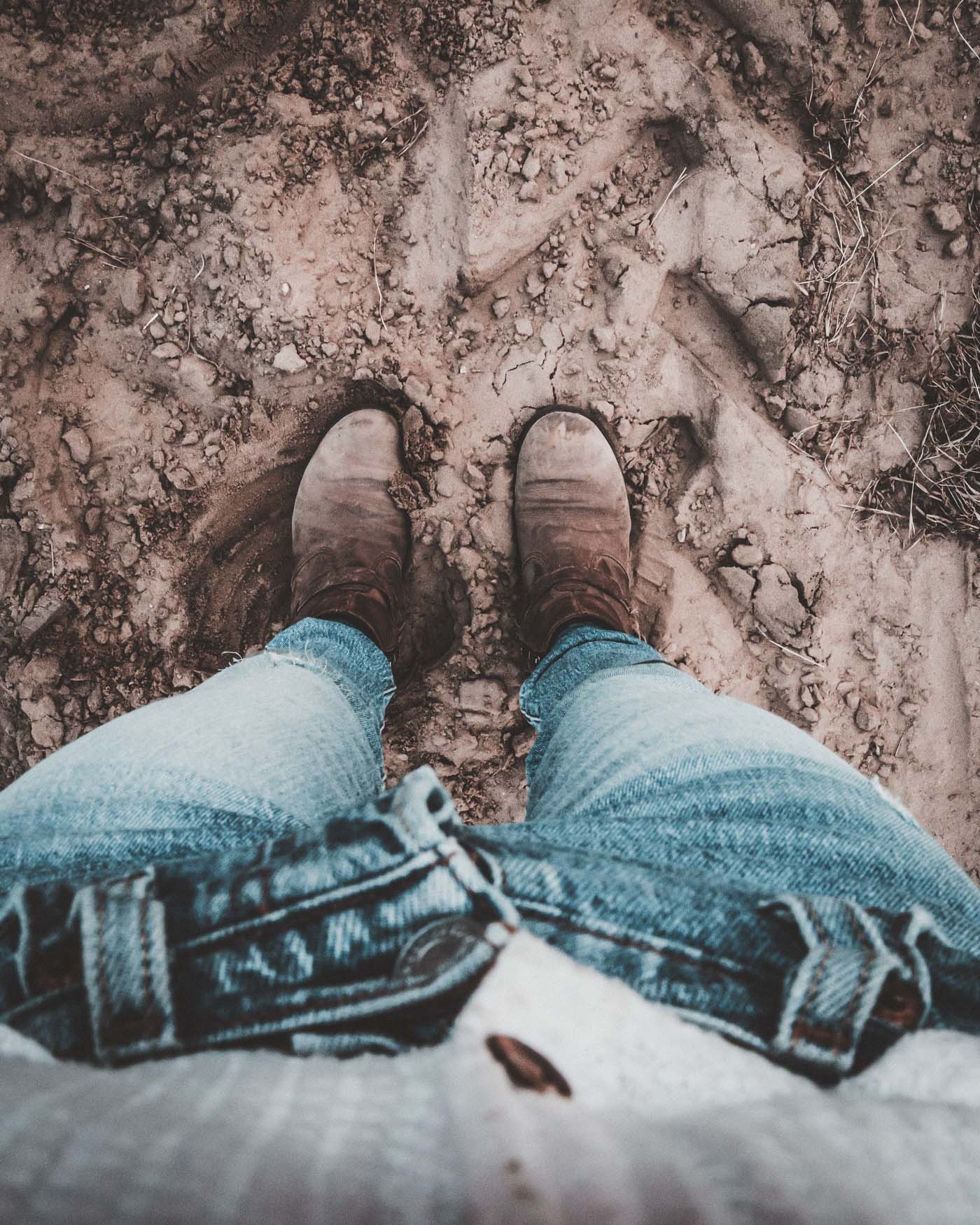
First Year Flower Farming: 12 Challenges
Soil Fertility
Hands down, our biggest challenge in our first year flower farming was soil fertility. I took a soil sample of our fields when we moved to the farm in Fall 2019. We knew this old, conventional crop field was craving some major nutrients, but we did not know just how much.
Our soil test came back with organic matter at 0.06 percent. Yikes. A typical lawn is 2–4 percent. In general, soil organic matter levels have fallen from 5-6 percent to less than 3 percent on most cropland soils.
Less than 1 percent is about what you’d find in a desert, oy! Which makes sense, because our field is also about 80 percent sand. At least we have good drainage?
I knew I had my work cut out for me. Increasing soil fertility organically does not happen overnight. In fact, according to the NRCS, it can take 20,000 pounds of organic inputs, such as crop residue, to increase the actual soil organic matter by just 1 percent.
For the the cut flower field, we brought in as much compost as we could afford, added organic amendments, and invested in a compost tea brewer. However, many of the plants in the production field still struggled.
We planted the rest of the field in cover crop in spring, followed by native prairie for the pollinators this fall in hopes to increase biodiversity. I plan to dedicate more blog posts specifically to our soil fertility journey, in case anyone else is in a similar situation.
If you want to know exactly how we feed our soil organically, you can grab our free guide at the top of this page.
Short Stems
The winter before our first year flower farming, I daydreamed of a lush field, filled with plants adorned with beautiful blooms and stems for days.
While we certainly managed some beautiful blooms, our plants were more on the short and stocky side, ha. This was to be expected after our soil test, but I may have had a slight panic attack when our first stems barely went past my ankles.
I saved our longest stems for bouquets and arrangements, but I couldn’t bear to let the little guys go. I’m short after all (5’2″ ahem), and there’s nothing wrong with me! So, I started filling mini mason jars with flowers all around our house.
One day, Matt suggested other people might enjoy them too, and he was right! That’s why I keep him around here, but we’ll save that story for the wins.
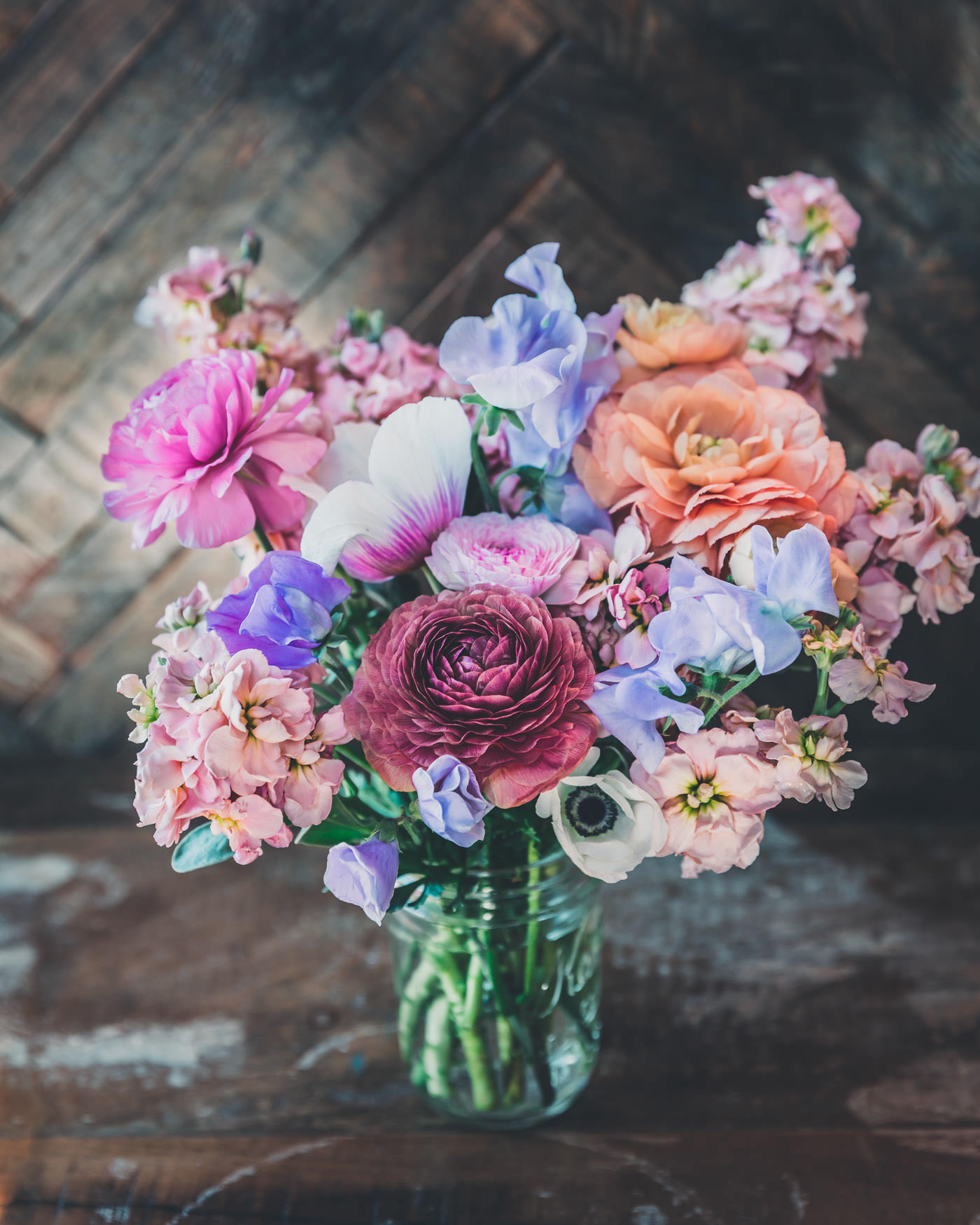
Time
Can I tell you something? I didn’t want to include time on this list. In fact, I intentionally avoid phrases like, “I don’t have enough time,” as I truly believe it’s all about how we prioritize.
But now can I be honest with you? I didn’t have enough effing time! Matt and I both work full time, and a 1/4 acre was about all we could handle. Even though I was usually up with the sun and working well past when it went down at night, I found myself wanting (and needing) more time.
2021 will be about “making” more time by honing in on our farming practices and continuing to add efficiencies into our processes. Things like landscape fabric, irrigation systems, harvesting technique, and better bouquet making all create more time through efficiency.
Irrigation
When we first moved to the farm, the only water was at the house, which is 300 yards away from the field. Seedlings need to be watered in shortly after transplant, or they will die. Especially in super sandy soil!
For the first few months, while the shed was being built, I watered everything . . . by hand! Literally filled a tank strapped onto the back of the gator, drove it down to the field, emptied the water into a watering can and watered the rows. Over and over again. It was the biggest time suck. Ever.
Luckily, Matt and his buddy installed water down to the shed, which made this task a little easier, and we installed drip lines shortly after that. For this reason, irrigation will also be making the win list.
If you’re new to flower farming, take my word for it: have a plan for irrigation. Don’t be like me.
Weeds
Want to know something funny? We were actually relieved at the first sign of weeds. It meant that the soil in the field wasn’t completely dead. And even though the weeds even struggled, there were still plenty to contend with.
The thing about weeds is that no matter how much you pull, there are always more! For this reason, we invested in landscape fabric, but because we were waiting on irrigation, we were not able to put it down for many of the beds. The kind of landscape fabric we use is water permeable, but we wanted to install drip tape underneath the fabric to hold it in place.
If you’re new to flower farming, have a plan for weed management: landscape fabric, mulch, and/or the right tools like collinear hoes. If you’re local, we love Green Grove Supply in Owen, WI for quality products at awesome prices.
Injury
If you get our newsletter or follow along on instagram, you know I missed a few weeks of flower deliveries due to a foot injury. I dropped a giant glass table top directly on my toe! Even though I was wearing leather work boots, I broke my toe and completely lost the nail. It sounds silly that a toe could wreak so much havoc, but I could barely walk for weeks!
I included this one because injuring yourself can be a big deal, especially if you’re doing a lot of the work! Matt was working out west when this happened, so it definitely impacted our season.
Sweet Peas
Oh good grief, the sweet peas! They were doomed from the start. Because I was so excited to get a jump start on the season, I may have sowed them a wee bit too early inside. I *know* not to do this; I *always* prefer smaller seedlings to bigger ones. The larger plants have a harder time with transplant shock. But I just couldn’t help myself!
The once-healthy sweet peas turned into giant, spindly plants that needed to be transplanted. So transplant I did, and then came the polar vortex. To be fair to myself, this temperature drop was not in the forecast. It was also record-breaking low.
And I mean record breaking. When I plan the farm, I use data from the past 30 years to make decisions (yes, I am a huge nerd). I wanted to get the sweet peas out early enough to beat the heat (they hate heat), but late enough to avoid temps below 24. Even low 20s would probably be OK with frost cloth. In the past 12 years, only once did the temperature drop below 20 degrees in April (2018), so I took a chance.
And I lost. Here are some words used by the National Weather Service at the time: arctic air, heavy and blowing snow, wind gusts as high as 40 mph, snow accumulations up to 10 inches. Temps as low as 15F. Even with frost cloth, that’s just too cold. Despite all this, a few actually survived, but hardly what I planted. Facepalm.
All that to say, learn about your first and last frost dates. Don’t sow too early. I don’t regret taking chances or pushing the limits, because it’s something I want to explore as a farmer, but be prepared that those chances might not turn out.
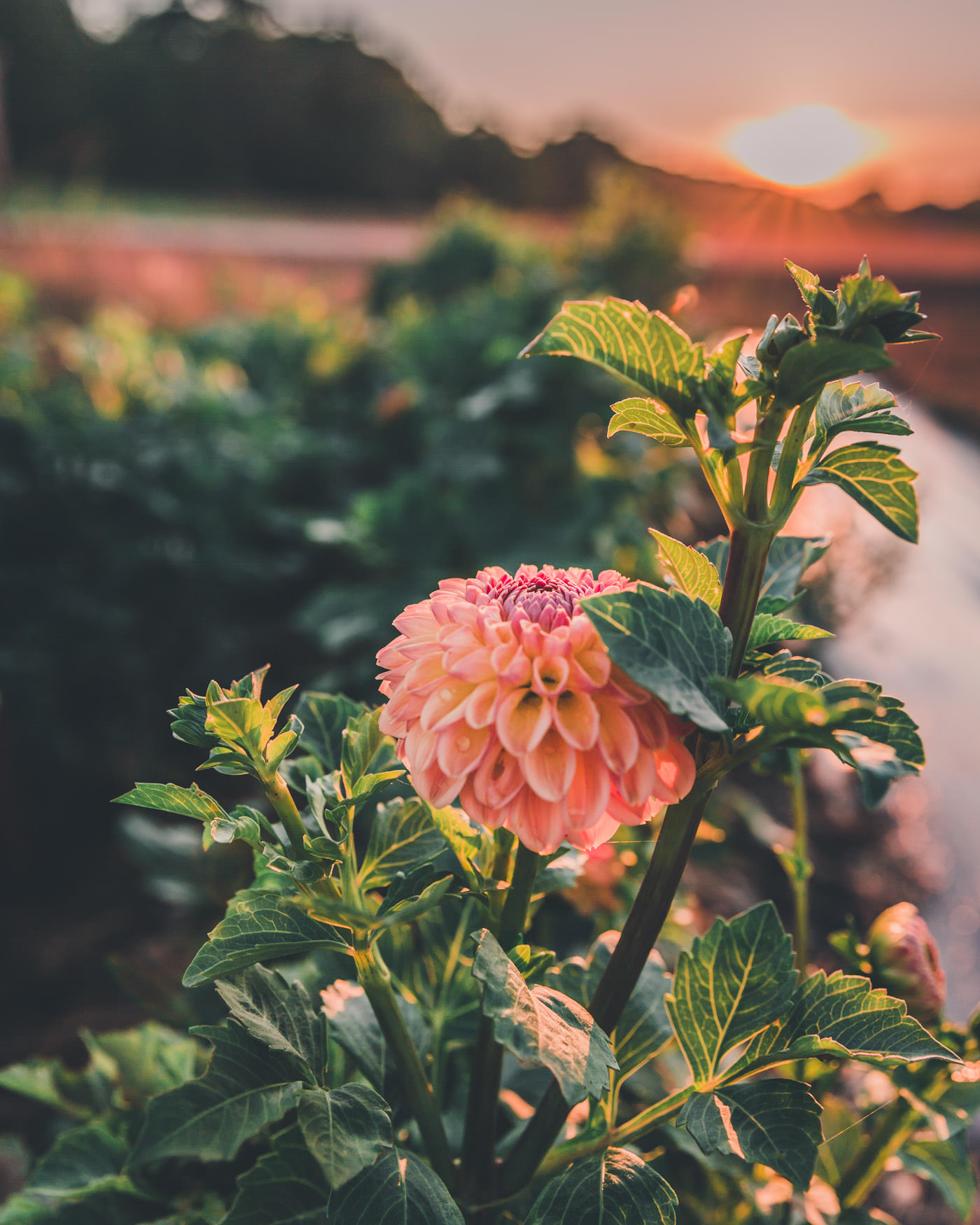
Dahlias
From speaking with flower-farming friends across North America, it sounded like many people had a hard year with dahlias, and we were no different. We had a record-breaking amount of days above 90F, and dahlias simply don’t like that. What can I say? 2020 broke a lot of records.
Foliage & Fillers
Erin Benzakain says one of the biggest mistakes flower farmers make is not growing enough filler and foliage. So, I grew a lot, but it still didn’t feel like enough! Thank goodness Matt’s mom gave me access to her ninebark.
My biggest issue was that some foliage, like Bells of Ireland, were a total flop for me. My Dusty Miller was pretty, but it hardly got longer than 6 inches. I’ll be trying them again in 2021, but not relying on either of them.
I like to plan for 50% fillers in our farm plan. It’s worth learning what does and does not work well in your climate. If you can invest in perennials, go for it.
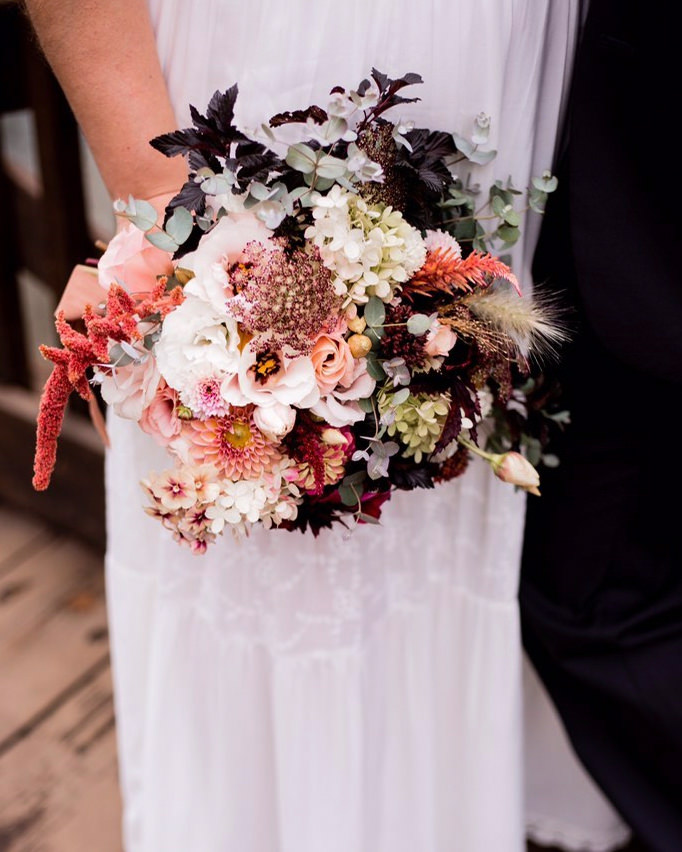
Wedding Requests
We had to turn down quite a few wedding requests last year, and each one broke my heart a little bit! In fact, I only took on one, but the bride was open to any flowers and colors, though she loved blush and deep berry hues. She wanted a petite bouquet and loose stems for antique jars for her tables. It was the most nerve-wracking design I’ve done, but we were both thrilled with how it turned out 🙂
One of the biggest challenges with weddings is timing as our season is quite short in Zone 4. And although we’ve been growing things for years, getting the bloom time right for specific flowers and colors on a larger scale is something I’m still learning.
That said, we hope to do more weddings in the future!
Farm Tours & Pick-Ups
The number one request we received this year was to either visit or pick up flowers at the farm. Although it’s something we’re considering in the future, it’s not something we were ready to commit to right away.
Aside from being fairly private people, it was our first year here, and we had (and still have) a lot foundational work to do. There was construction in one shape or form happening most of the year, which presented some safety hazards.
Also, frankly, it was kind of a mess around here, uffda! Ground dug up, weeds, tools, construction, you name it. Matt is a much more organized and orderly person than me by nature, so this is definitely a “me” thing 🙂
The other issue is time (ugh, again): I work a demanding corporate job, so my time to be available in the field is limited. And while I’m being brutally honest, the flower field wasn’t quite where I wanted it to be in terms of aesthetics.
It’s one of my biggest dreams to get this place worthy of visitors, but we’re still a work in progress. We built a pole shed that will hopefully house a cooler and area for flower pickups. So if you were ever interested in that, stay tuned!!
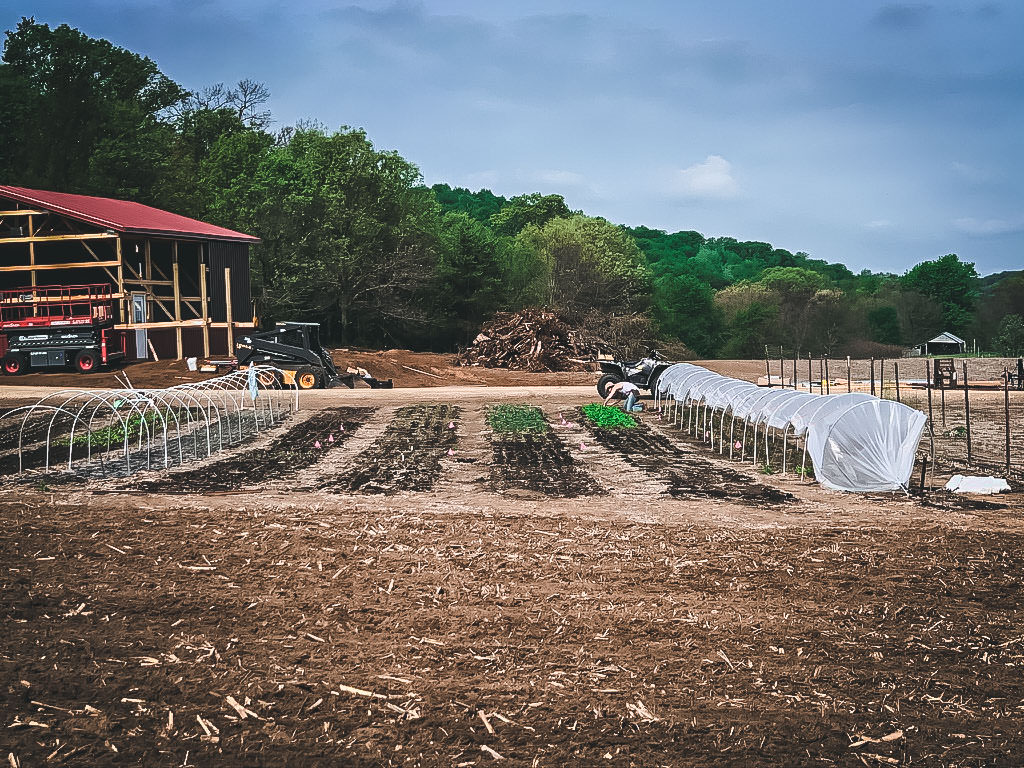
Blog, Photography, Social Media
Finally, the last challenge during our first year flower farming was the social spaces. In my ideal world, I spend time each day capturing all the beauty here through images and words. Photography fuels my soul, and I especially enjoy sharing images and words on the blog, our newsletter, and social media. Writing and photography are my creative outlets, but they don’t always get the time they deserve. I hope I can move this over to the win list in 2021!
That’s a wrap! Did you find this helpful? If so, I’d love it if you shared it with your pals.
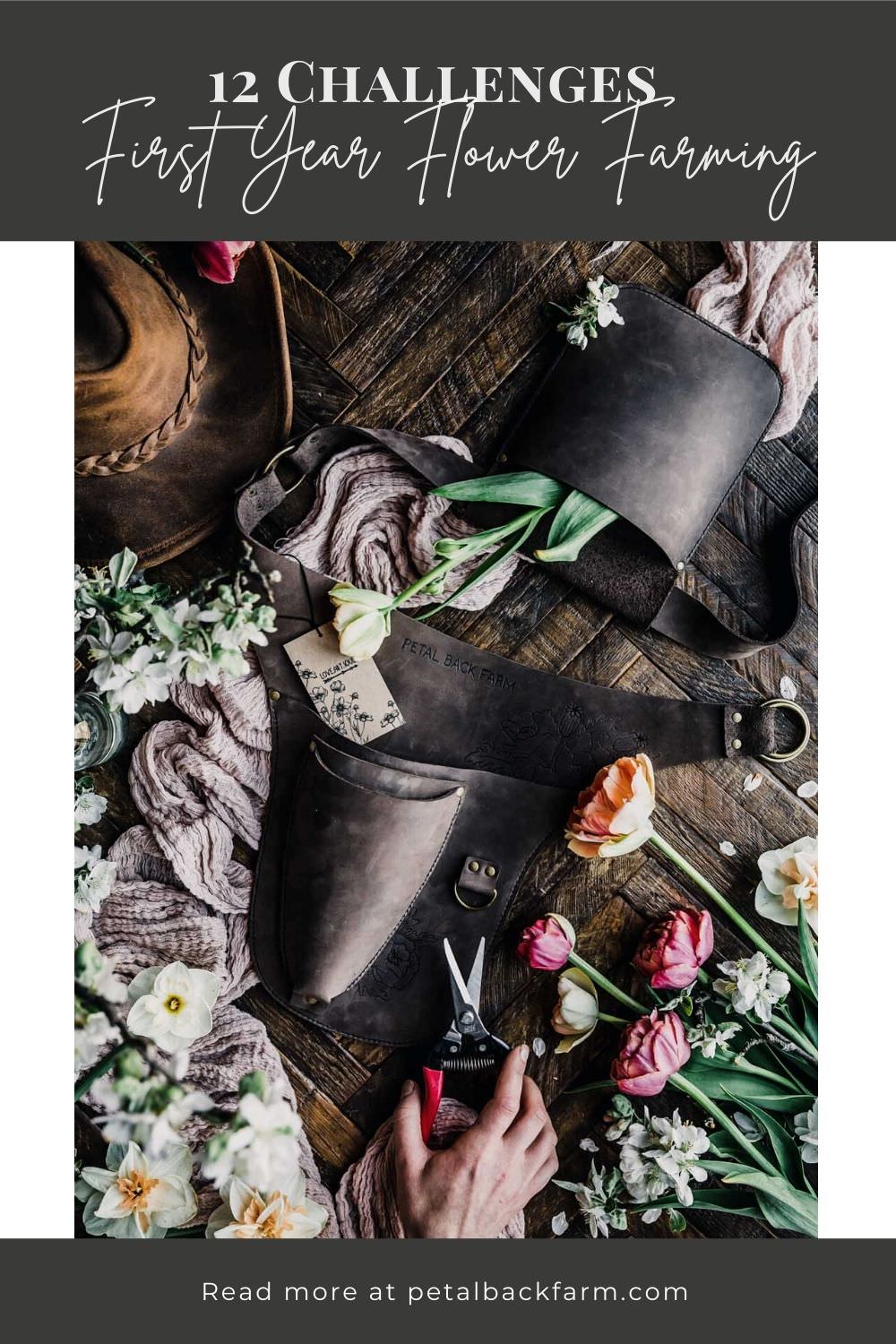
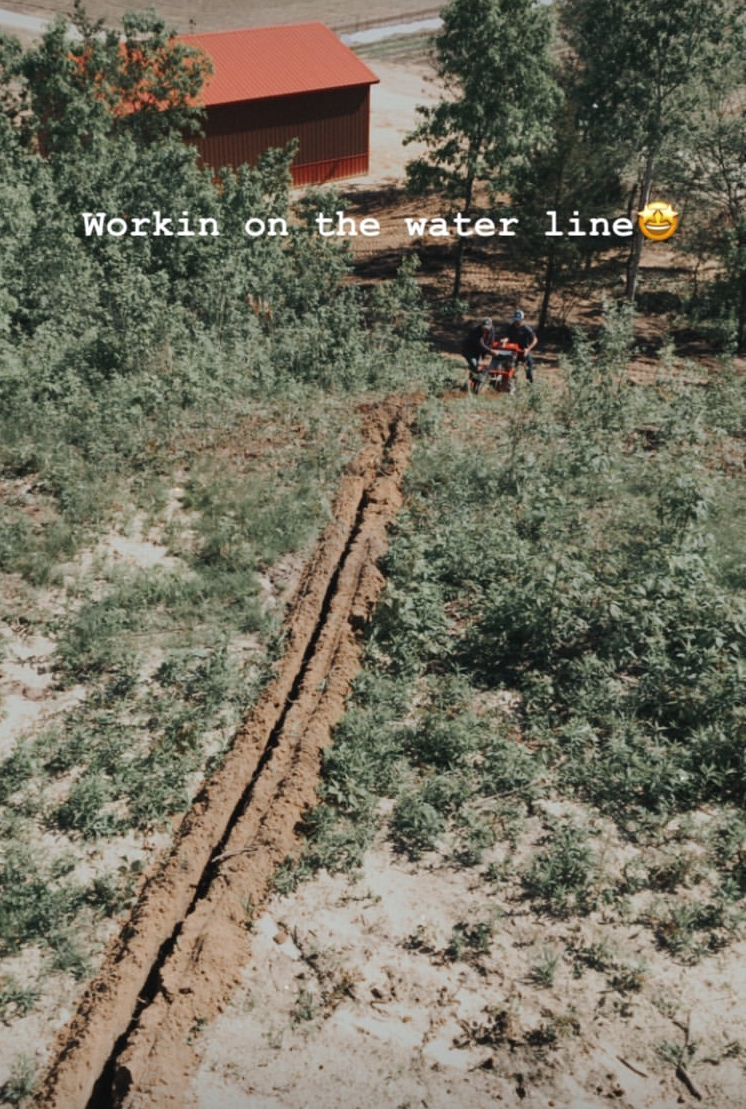
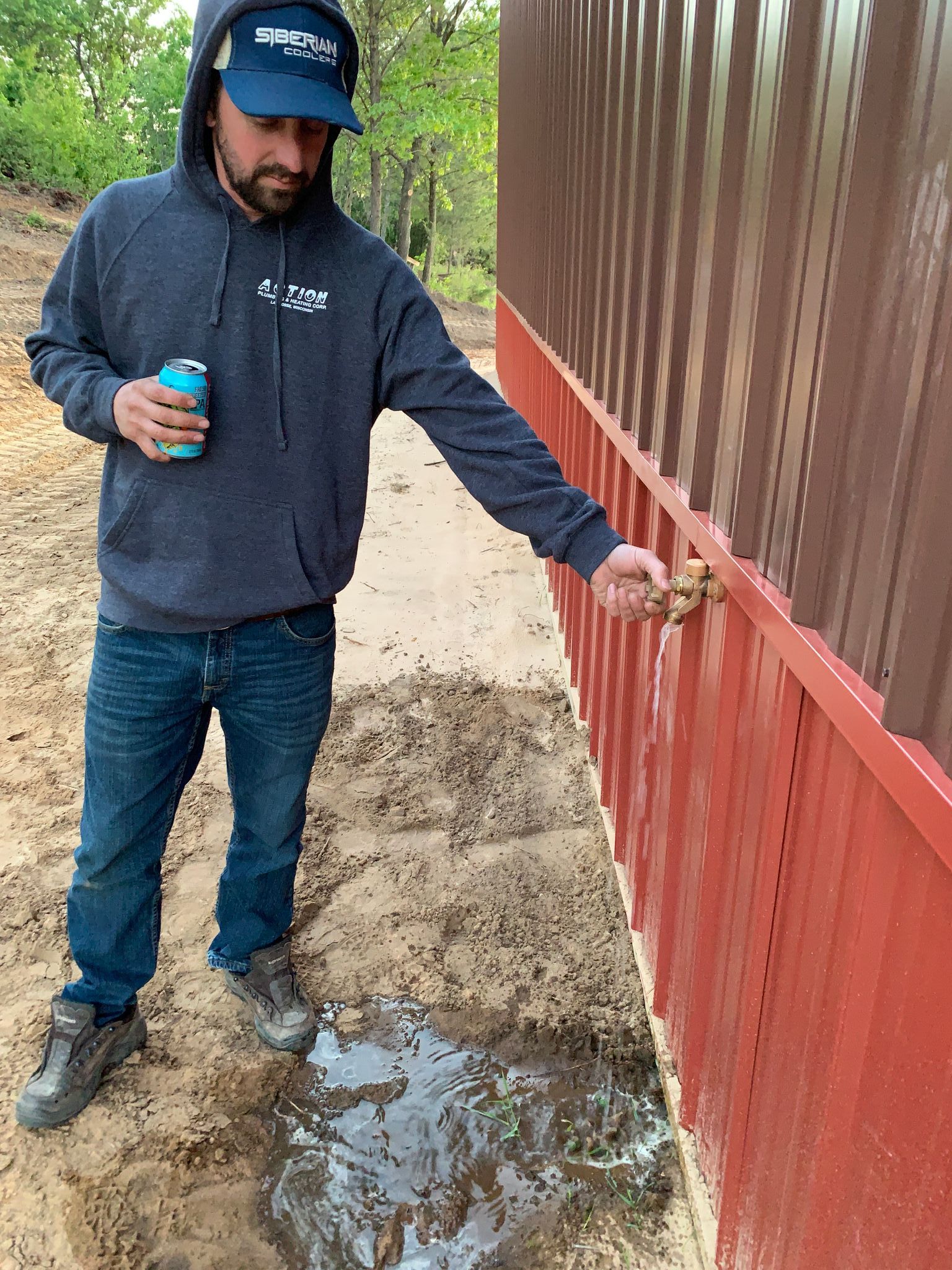
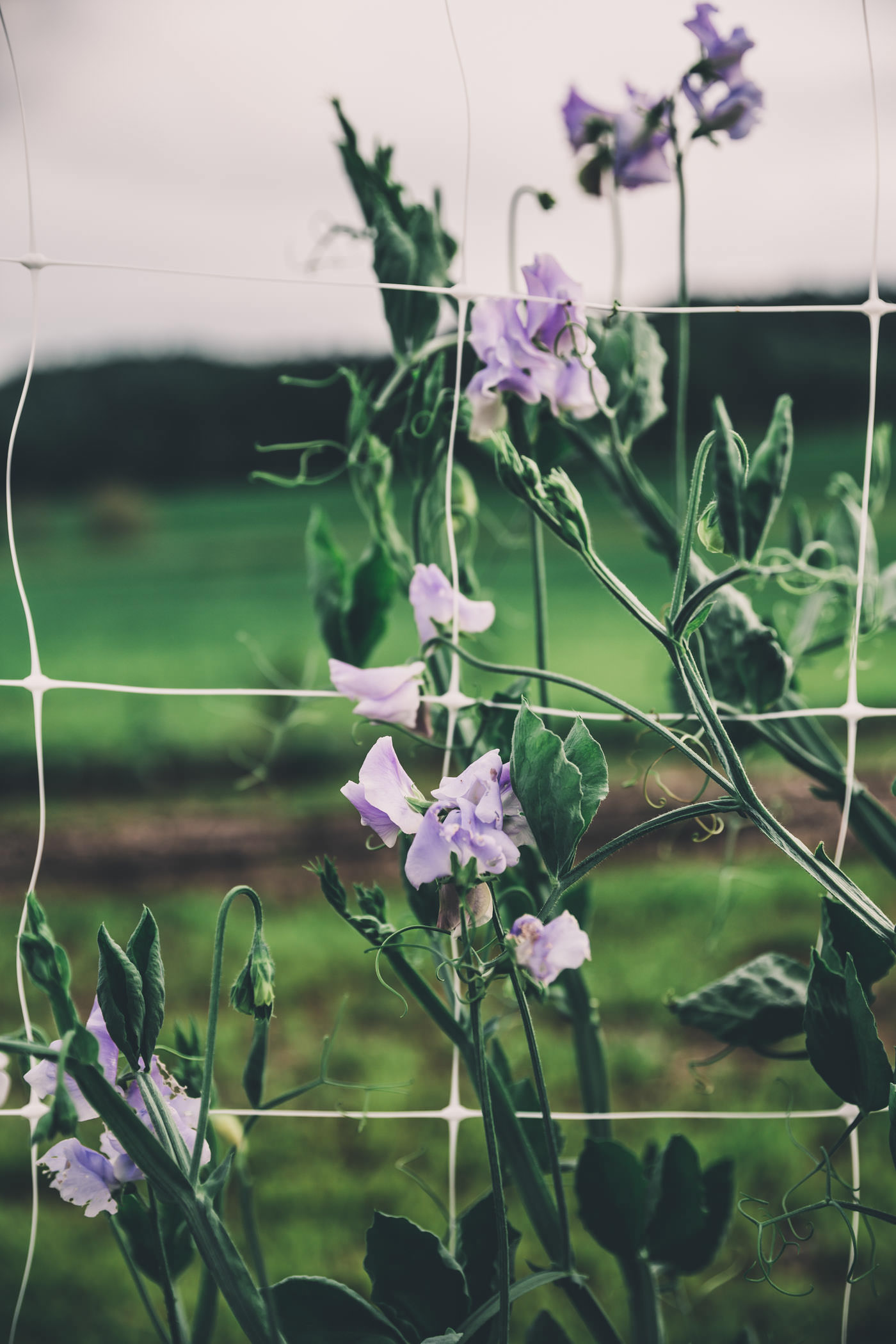
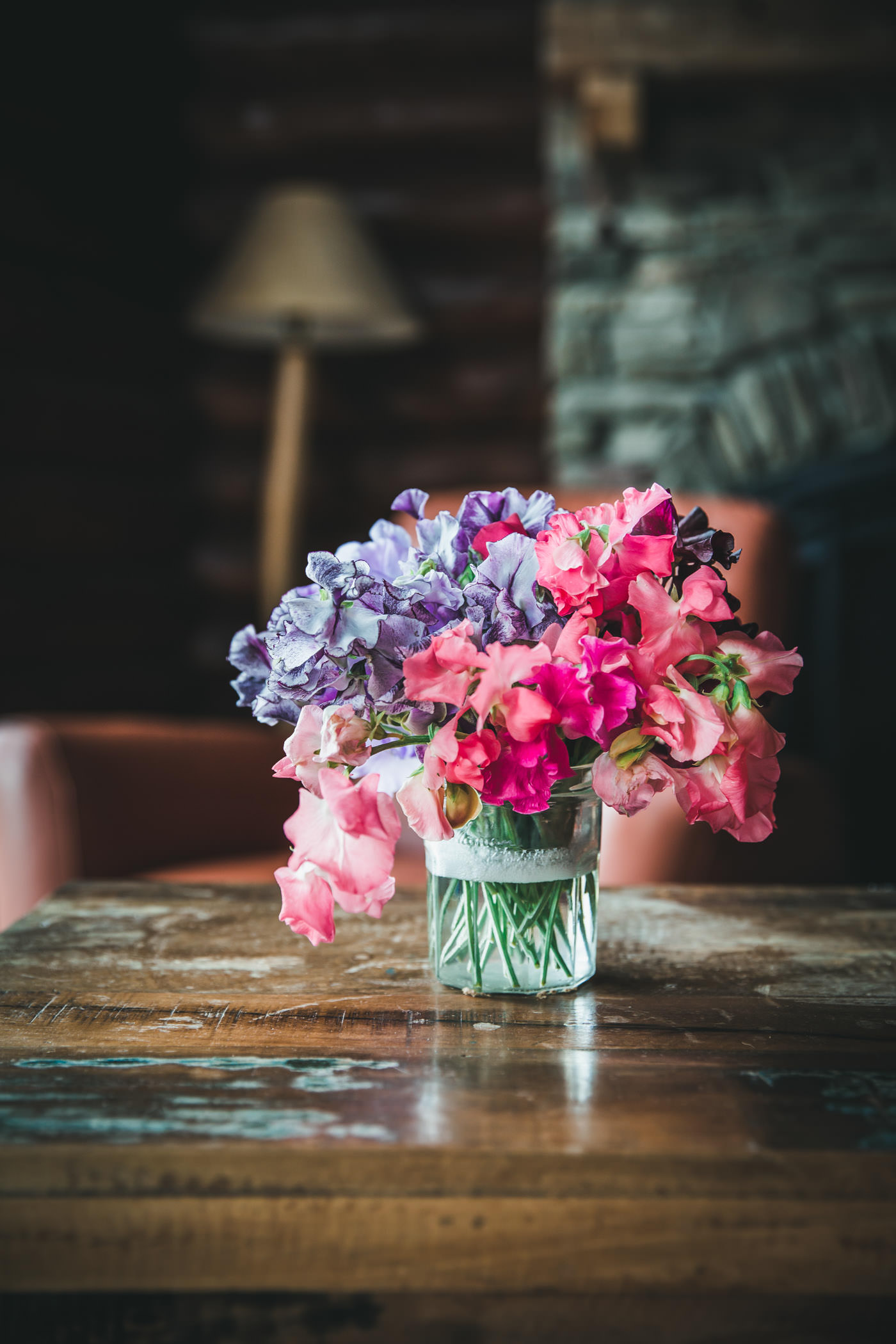
[…] I was totally embarrassed! Matt must have sensed it, because he didn’t even tease me about it, a rarity around here. But as we know, failures truly are our best teachers. […]
Hi Maggie,
Congrats on your first year of flower farming! It’s wonderful what you and Matt have accomplished so far…especially both working outside of the farm full time! Your reflections on your challenges were all things I can relate to…I am a current Floret Class of 2021 attendee (living in Merrill, WI) and wondered if you have been in the past? Your blog is amazing – the way you capture your farm and bounty is incredible both in words and images…I look forward to following your story! All the best to you both and stay healthy and well and keep on sharing the beauty 🙂
Hi, Laura!
Thank you SO much and same to you on the floret workshop! I am 2020 alum, taking it again as we speak, and know I will reference it for years to come! It’s such an invaluable resource, as are the books listed at ASCFG. We’ve been through Merrill on our way up to the cabin! Beautiful area 🙂 Thank you again for your kind words and cheers to the season to come!
[…] very low, especially in depleted soils like our old, conventional crop field. Soil fertility is our number one challenge here at the […]